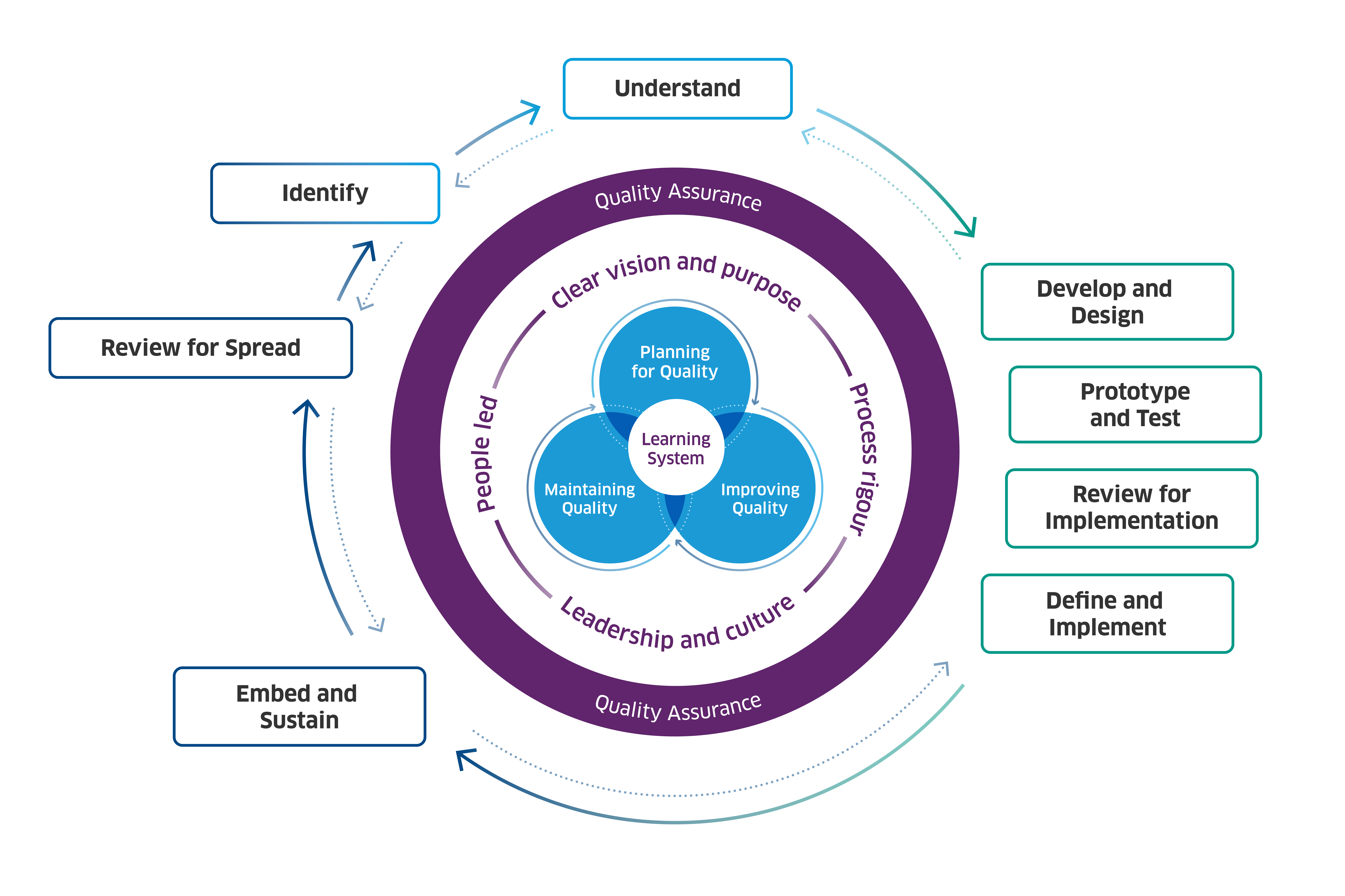The Reducing Drug-Related Harm by Proactive Outreach in the Emergency Department (DR HOPE) project aims to achieve a reduction in non-fatal overdoses and drug-related death through the use of a trigger checklist and assertive outreach. The full case study and summary are available below.

Steps of change
Identify
Identified the problem: the number of drug-related deaths in the Highlands continues to rise. Current processes and systems were not timely enough to identify and outreach those at risk.
Understand
Understood the evidence base re: proactive outreach, the current system of outreaching between the Emergency Department (ED) and the recovery service (using process mapping), the impact on people (including listening to those affected), and what needed to change.
Develop and design
Used a co-design process with services and people to create a trigger checklist, engaged stakeholders, identified additional outreach capacity, and designed future state processes.
Prototype and test
Tested the use of the trigger checklist in the ED, used Plan-Do-Study-Act (PDSA) cycles to test and learn about the process, and captured ideas about how the checklist worked, for whom, and in what situations.
Review for implementation
Made changes based on learning from testing, listened to feedback from frontline staff and people at risk of drug-related harm, and reviewed and refined measures and theories of change.
Define and implement
Defined when the trigger checklist should be used, agreed the version of the checklist to be implemented, established referral thresholds, agreed information sharing practices, and identified the role of outreach workers.
Embed and sustain
Embedded and sustained the change by maintaining ongoing data collection, continuing relational coordination between services, providing feedback to the ED, ensuring ongoing strategic support, using funding differently, and ensuring continued leadership buy-in.
Review for spread
Tested and implemented in different contexts based on learning, secured funding for further testing, and adapted the pathway for using the trigger checklist based on context.
Enablers of quality and change
Clear vision and purpose
The project made sure a clear vision and purpose underpinned the work by ensuing:
- a shared understanding of the system, the impact on people, and the need for change
- ongoing changes were aligned to the aim
- the project had agreed boundaries and limits to make it doable
- when things got tough, the purpose of the change was reinforced
Leadership and culture
The project ensured supportive leadership and a positive culture underpinned the work by:
- engaging all leaders from the start and having a motivating service recovery lead
- behaving in a way that aligns with values
- creating space to address staff concerns
- accepting “we don’t always get it right, but we want to get better”
- understanding the need for strategic input to remove the barriers
People-led
The project ensured a people led approach underpinned the work by:
- engaging everyone from the very start
- co-designing the trigger checklist and pathway
- listening to people and their loved ones who access recovery services
- ensuring outreach for all at risk of drug-related harm in the community
- demonstrating listening by testing changes suggested by frontline workforce
Process rigour
The project ensured process rigour by:
- establishing good project management
- ensuring governance, contracts and finance were in place
- managing risk around information sharing and potential overwhelm on the service
- using QI tools and techniques and embedding realist evaluation
